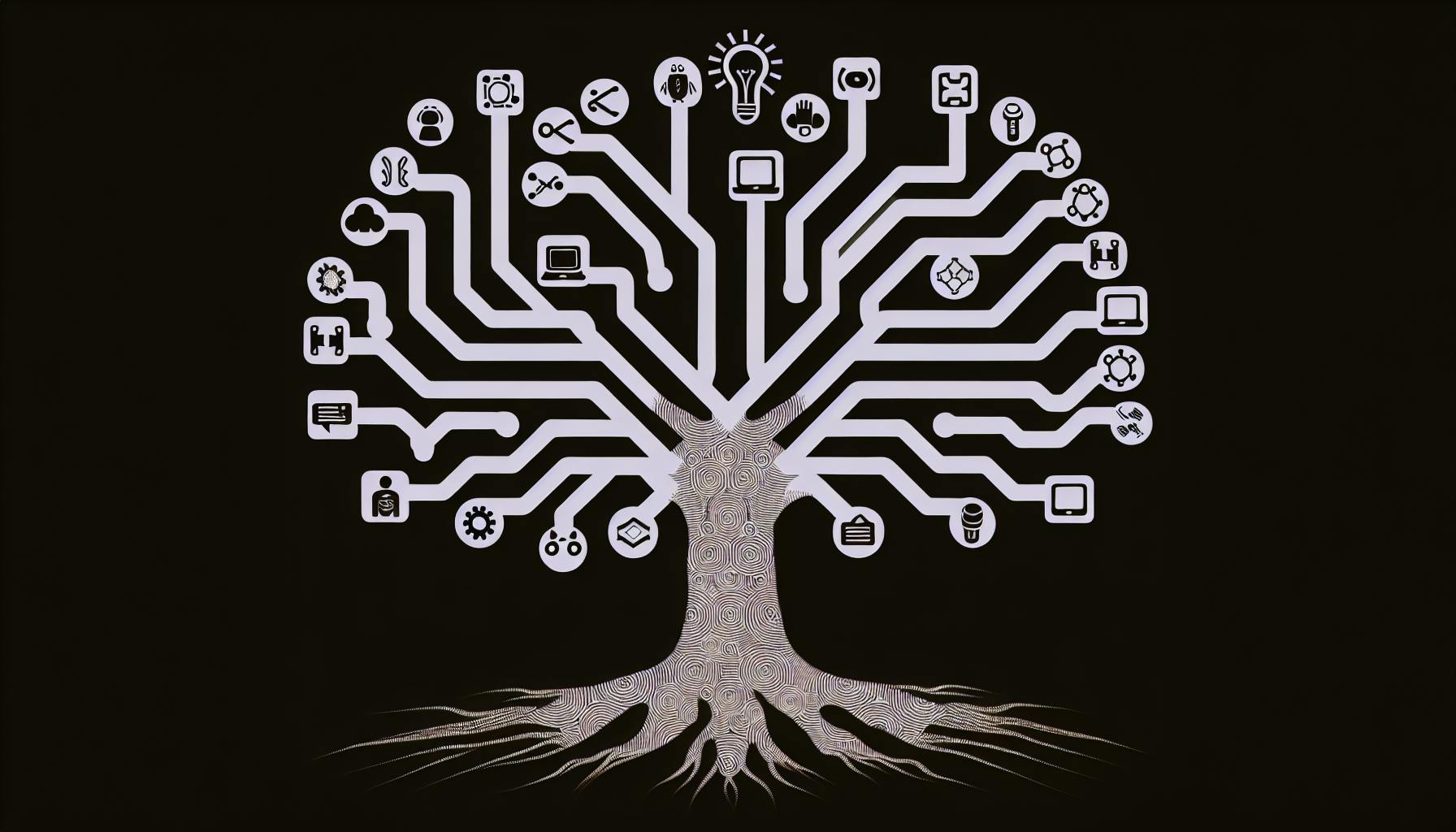With the rise of remote and hybrid work environments, most organizations would agree that securely managing employee mobile devices is more critical than ever.
Luckily, open source mobile device management (MDM) solutions offer robust capabilities to configure, monitor, and secure mobile devices at scale, often at a fraction of the cost of proprietary options.
In this post, we'll explore the fundamentals of open source MDM, including an overview of popular solutions, basic setup and configurations, common use cases, and the benefits of community-driven development.
Introduction to Open Source Mobile Device Management
Open source mobile management (MDM) refers to MDM software that is openly developed and distributed under an open source license. This allows the code to be freely used, modified, and shared by the developer community. Some key benefits of open source MDM include:
Understanding the Landscape of Open Source MDM
Open source MDM solutions have gained popularity in recent years as flexible, cost-effective alternatives to proprietary MDM platforms. Some of the most well-known open source MDM projects include:
- Flyve MDM - A widely-used open source MDM for managing Android, iOS, Windows 10, and Linux devices. It is designed to integrate with GLPI for IT asset management.
- MicroMDM - A lightweight MDM solution focused on managing Apple devices running iOS/iPadOS and macOS.
- NanoMDM - Another open source MDM solution for Apple devices built using Golang. It is simple, lightweight, and easy to deploy.
These solutions allow organizations to take control over device management configurations, policies, apps, and security without vendor lock-in. The open source model facilitates rapid innovation through community collaboration.
Advantages of Community-Driven MDM Solutions
Some of the major advantages of community-driven open source MDM platforms include:
- Cost Savings: Avoiding expensive proprietary license fees and subscription costs.
- Customizability: Ability to modify the platform to meet specific device management needs.
- Transparency: The open source codebase enables transparency into how the software works.
- Interoperability: Integration with other open source or in-house tools is simplified.
- Support: An active community for documentation, troubleshooting, feature requests, and contributions.
Overall, open source MDM delivers enterprise-grade management capabilities that compete with top proprietary MDM vendors at a fraction of the cost.
Common Use Cases for Open Source MDM
Typical use cases where open source MDM solutions deliver significant value include:
- Managing corporate-owned devices across various platforms like Android, iOS, Windows, macOS, and ChromeOS.
- Streamlining device enrollment, configuration, policy enforcement, and security monitoring.
- Facilitating BYOD (bring your own device) programs with selective management.
- Automating device provisioning and deprovisioning.
- Integrating with existing identity management and IT systems.
- Enabling kiosk devices with lockdown capabilities.
With robust community support and rapid innovation powered by open source collaboration, these platforms offer a compelling alternative to traditional MDM approaches. The flexibility to deeply customize and scale management functionalities also positions them as an attractive long-term solution.
What is open source MDM?
Open source mobile device management (MDM) refers to MDM software that is openly developed and distributed under an open source license. This allows the code to be freely used, modified, and shared by anyone.
Some key things to know about open source MDM solutions:
- They provide capabilities to enroll, configure, secure, monitor and manage mobile devices like smartphones, tablets and laptops across platforms like Android, iOS, Windows 10, MacOS and ChromeOS.
- The source code is publicly available so developers can customize the software to meet specific needs or integrate it with existing infrastructure.
- Community-driven development means features and fixes come from a global community of contributors rather than a single vendor. This leads to faster innovation.
- Open source MDM is appealing for organizations that want more control, flexibility and transparency over their mobile device management platform. It avoids vendor lock-in.
- Leading open source MDM projects include MicroMDM, Munki, Kolide, Headwind MDM and more with support for various platforms.
- Integration with existing device management solutions is easier compared to proprietary MDM products. Customizations can adapt the software to legacy infrastructure.
- There are options ranging from self-hosted to fully managed solutions provided by commercial vendors. Larger deployments may need professional services for setup and maintenance.
- While the software itself is free, resources are still needed for hosting, management, scaling and supporting an open source MDM implementation. Total cost of ownership should be evaluated.
In summary, open source MDM solutions offer customizable, transparent, and interoperable options for organizations seeking greater control over their mobile fleet management, allowing them to avoid lock-in to a single vendor and integrate tools like an AI Software Cost Estimator for enhanced decision-making.
Is headwind MDM free?
Yes, Headwind MDM is a free and open source mobile device management software for Android.
Headwind MDM provides core MDM functionality like device enrollment, app distribution, policy configuration, remote actions, etc. It is designed to help manage a fleet of Android devices through a user-friendly web interface.
Some key aspects of Headwind MDM:
- Completely free and open source under the GPLv3 license
- Hosted on GitHub for community contributions
- Supports modern Android versions like 10 and above
- Offers both cloud hosted and on-premises deployment options
- Integrates osquery for detailed hardware/software inventory
- Enables remote device lock, wipe, screen capture, etc.
- Allows app blacklisting/whitelisting across devices
- Easy to set up with Docker containers
So if you are looking for a free self-hosted MDM solution for your organization's Android devices, Headwind MDM is certainly worth evaluating. The open source model fosters rapid innovation from a global developer community.
To get started, you can download Headwind MDM from its GitHub repository. Contributions and feature requests are also welcome!
What is headwind MDM pager service?
Headwind MDM is an open source mobile device management solution focused on managing Android devices in corporate environments.
The key aspects of Headwind MDM include:
- Enrollment: The process of installing the MDM agent application on employee devices and connecting them to the MDM server for centralized management. This allows policies, configurations, apps etc. to be deployed remotely.
- Android device management: Headwind specifically targets Android phones and tablets used by employees. Apple iOS devices are currently not supported.
- Open source: As an open source project, Headwind MDM is free to use and organizations can host it themselves on internal servers rather than relying on a proprietary SaaS platform.
Some of the main use cases and capabilities offered by Headwind MDM:
- Secure access control: Enforce password policies, encryption, VPN configurations etc. across all managed devices.
- App management: Distribute or restrict apps, monitor app usage statistics.
- Device tracking: Locate lost or misplaced devices, remote lock or wipe if needed.
- Policy enforcement: Ensure compliance with corporate IT policies on devices via automated monitoring and controls.
As an open source solution, Headwind MDM allows companies to avoid vendor lock-in and scale device management in a cost-effective manner. The active developer community also contributes new features and improvements on an ongoing basis.
sbb-itb-9c854a5
What is MDM app in Android?
Mobile device management (MDM) software allows IT administrators to control, secure and enforce policies on smartphones, tablets and other endpoints.
Some key capabilities of MDM solutions for Android devices include:
- Remote configuration of device settings and restrictions
- Application management to deploy, blacklist/whitelist, and update apps
- Security policies like device encryption, passwords, wiping lost devices
- Compliance rules to enforce password policies, disable features etc.
- Monitoring and analytics for inventory, usage data, location tracking
Open source Android MDM projects provide similar functionality but with the added benefit of community contributions and customizations available in the open source code.
Popular open source MDM options for managing Android devices include:
- Flyve MDM - Feature-rich MDM built on GLPI and MQTT protocols
- Headwind MDM - Lightweight self-hosted solution focused on privacy
- MicroMDM - Apple device management with experimental Android support
The choice depends on specific use cases and customization needs. But open source Android MDM solutions offer more transparency, flexibility and lower costs compared to paid alternatives.
Assessing Open Source MDM Options
Best Open Source MDM Solutions Overview
Open source mobile device management (MDM) solutions provide organizations an alternative to proprietary MDM platforms. Popular open source options include:
- Flyve MDM: Feature-rich MDM focused on Android devices with support for Windows and Linux. Offers remote control, geolocation, inventory reporting and more. Hosted on GitHub.
- Headwind MDM: Lightweight MDM for managing Android devices. Emphasizes ease of use and setup. Limited feature set but highly customizable via plugins.
- MicroMDM: Multi-platform solution supporting iOS, macOS, Android, Windows, and Linux devices. Includes basic device management capabilities. Simple to deploy.
- Munki: Specialized for managing macOS and iOS devices in education and business environments. Open source version of Apple's device enrollment program.
Choosing between solutions depends on target platforms, required features, IT resources, and customizability needs.
Flyve MDM: A Deep Dive into the Open Source Android MDM
Flyve MDM is one of the most full-featured open source MDM solutions focused specifically on Android. Key capabilities include:
- Remote control and troubleshooting: Remotely access Android devices to diagnose issues and perform support actions.
- Application deployment and configuration: Distribute apps remotely with specific settings.
- Geolocation tracking: View device locations on a map for security and logistics.
- Inventory reporting: Generate detailed hardware and software inventory reports across all managed devices.
Flyve MDM has an active community on GitHub collaborating to build new features. It integrates with monitoring tools like MQTT and Telegram for notifications. For organizations managing large Android fleets, Flyve MDM balances advanced management with open source flexibility.
Headwind MDM: Streamlining Open Source Mobile Device Management for Android
Headwind MDM takes a lightweight approach to open source Android device management. It focuses on simplicity and ease of use rather than extensive built-in features. Key capabilities include:
- Basic MDM functions: App management, configuration profiles, remote actions
- Simple web-based admin console: Easy enrollment and setup without advanced technical skills
- Highly customizable: Plugin architecture allows enhancing functionality via Java and Kotlin
- Self-hosted installation: Can be deployed on-premises for maximum data control
With its emphasis on customizability, Headwind MDM is ideal for developers and smaller organizations aiming to avoid vendor lock-in. It provides a streamlined starting point to tailor an MDM solution to specific Android management needs leveraging internal development resources.
Open Source MDM on GitHub: Collaborative Development in Action
Most open source MDM solutions host active repositories on GitHub. This fosters decentralized, collaborative development workflows. Benefits include:
- Public issue tracking: Community members can report bugs, suggest features
- Version control and releases: Changes are carefully tracked ensuring stability
- Feature contributions: Users can directly contribute code to enhance capabilities
- Forking: Developers can easily modify copies of the codebase for custom implementations
The open model typically leads to rapid innovation, shared best practices, and transparency. Organizations can leverage these communities to influence future development based on their device management priorities and needs.
Setting Up Your Open Source MDM Environment
Choosing the Right Open Source MDM
When selecting an open source MDM solution, first consider your organization's size and device types. Smaller companies may opt for lightweight options like MicroMDM or NanoMDM, while larger enterprises often choose more robust solutions like Kolide or Puppet. You'll also want to determine which platforms you need to manage - MacOS, Windows, ChromeOS, iOS, Android, etc. Cross-platform solutions like Flyve MDM cater to mixed environments.
Specific management capabilities are another key criteria. If you simply need basic device tracking and security policies, Munki or osquery may suffice. For more advanced app distribution, configuration profiles, or remote control, look to feature-rich alternatives like Headwind MDM. Outlining your key use cases will narrow the options.
Basic Configurations and Setup
Popular self-hosted MDMs like MicroMDM, NanoMDM, and Headwind MDM provide open source server software that you configure on your own infrastructure. A typical setup involves:
- Installing on Linux or Docker containers
- Configuring the web-based admin console
- Connecting user directories via LDAP or cloud identity providers
- Enrolling devices by installing a management profile
First-time configuration takes a few hours. Refer to each project's documentation for step-by-step deployment guides. Leverage community forums if you need troubleshooting help.
Self-Hosting Your MDM: Open Source Self Hosted MDM Solutions
Choosing a self-hosted open source MDM gives you full control - and full responsibility. You take charge of managing the server infrastructure, applying security patches, handling backups & upgrades, and monitoring for issues. For some organizations, the added workload is worth it for the data privacy and customization benefits.
Leading self-hosted options include:
- MicroMDM: Simple, focused MDM for Apple devices
- NanoMDM: Lightweight multi-platform MDM
- Headwind MDM: Robust management with extensive configuration options
- Kolide: Combines device management with custom queries
Consider combining these solutions with remote monitoring tools like osquery for added visibility.
Integrating Open Source MDM with Existing Systems
Most open source MDM options provide REST APIs for integration with your environment. You can configure single sign-on (SSO) by connecting user directories via LDAP, Azure AD, G Suite, etc. For network security, allowlist the MDM server's IP address in firewall policies while restricting device access to authorized resources.
Use the REST API capabilities to orchestrate workflows between systems. For example, coordinate MacOS software installs between your MDM and endpoint management tools like Puppet or Munki. Sync device data bi-directionally with IT service management (ITSM) platforms. With some coding, you can build custom automations tailored to your tech stack.
Advanced Features and Customization in Open Source MDM
Open source mobile device management (MDM) solutions offer advanced capabilities that allow organizations to customize and tailor the platforms to their specific needs.
Leveraging Automation Tools with Open Source MDM
Automation tools like Puppet and osquery can integrate with open source MDM to streamline fleet management across diverse devices. For example:
- Use Puppet to automatically enforce security policies and push updates across devices.
- Leverage osquery to run SQL-based queries that provide visibility into fleet health and compliance.
- Create customized scripts that perform actions like installing apps or changing settings.
Automation reduces IT workload and ensures consistency in device configurations.
Customizing MDM for Your Organization
Open source MDMs allow tailoring to match organizational requirements:
- Branding: Apply custom branding to management portal and agent screens.
- Workflows: Build customized approval chains for device actions.
- Integrations: Connect to existing systems like LDAP, SIEM, and service desks.
- Custom Agents: Create specialized agents with extra logic and capabilities.
This flexibility allows open source MDM to slot seamlessly into IT environments.
Cross-Platform Solution Management with Open Source MDM
Leading open source options like MicroMDM, Munki, and Headwind MDM handle cross-platform environments spanning:
- MacOS
- Windows
- ChromeOS
- Linux
- iOS and Android
Centralized dashboards provide visibility and control across all devices via consistent interfaces. Policy-based configurations simplify security and compliance.
Unified Endpoint Management (UEM) with Open Source Tools
Open source tools enable unified endpoint management for cohesive security:
- Use single tool like Headwind MDM for UEM.
- Combine platforms like MicroMDM, osquery, Kolide for device management, monitoring, and security.
- Control all endpoints via centralized interface and policies.
This consolidated approach maximizes efficiency and minimizes risks.
Conclusion: Embracing Open Source MDM for Your Mobile Strategy
Summarizing the key insights on how open source MDM can revolutionize mobile device management through flexibility, community support, and cost-effectiveness.
Revisiting the Benefits of Open Source MDM
A recap of the main advantages of adopting an open source MDM strategy, including community-driven development and MDM alternatives.
Open source mobile device management solutions offer numerous benefits over proprietary options:
- Community-driven development: As open source projects, solutions like MicroMDM, Munki, and Kolide benefit from contributions by developers worldwide. This leads to faster innovation and the ability to customize the software to your organization's specific needs.
- Flexibility and interoperability: Open source MDM supports managing devices across platforms like iOS, Android, Windows, MacOS, and ChromeOS from a unified interface. This simplifies mobile device management.
- Cost savings: Avoiding vendor lock-in and license fees makes open source MDM extremely cost-effective, especially for handling a large or growing fleet of devices.
- Enhanced security: The transparency of open source code allows greater scrutiny for potential vulnerabilities. And maintaining control internally reduces security risks from third-party services.
Best Practices for Open Source MDM Deployment
Final recommendations for best practices in deploying and maintaining an open source MDM solution within your organization.
To successfully leverage open source MDM:
- Start with a small pilot to test device enrollment, policy setting, and monitoring. Confirm that core use cases are handled before scaling up.
- Closely track community project updates to stay current with the latest features and security patches. Or better yet, contribute back to the projects!
- Set up monitoring and alerts for device check-ins and policy compliance. This allows promptly identifying and troubleshooting any issues.
- Maintain organized device inventory records synchronized with the MDM, including ownership details. This aids management, especially for a large fleet.
- Develop a transition plan accounting for factors like existing device profiles, security requirements, and user training on updated MDM policies.
Future of Open Source MDM
A look ahead at the potential developments in open source MDM and how organizations can stay ahead in mobile device management.
With mobile devices playing an increasingly central role across industries, open source MDM is poised for rapid evolution. Potential developments include:
- Tighter integration with adjacent IT systems like identity management and end point security tools for unified controls.
- Support for emerging device categories like AR/VR headsets and Internet of Things (IoT) gadgets.
- Advanced automation and self-healing capabilities using AI/ML to simplify at-scale device management.
- Improved cross-platform standardization of policy definitions for simplified administration.
Organizations looking to future-proof their mobile management strategy should actively engage with open source MDM communities. Contributing ideas or resources to the collective development of these solutions will pay dividends in the long run.


